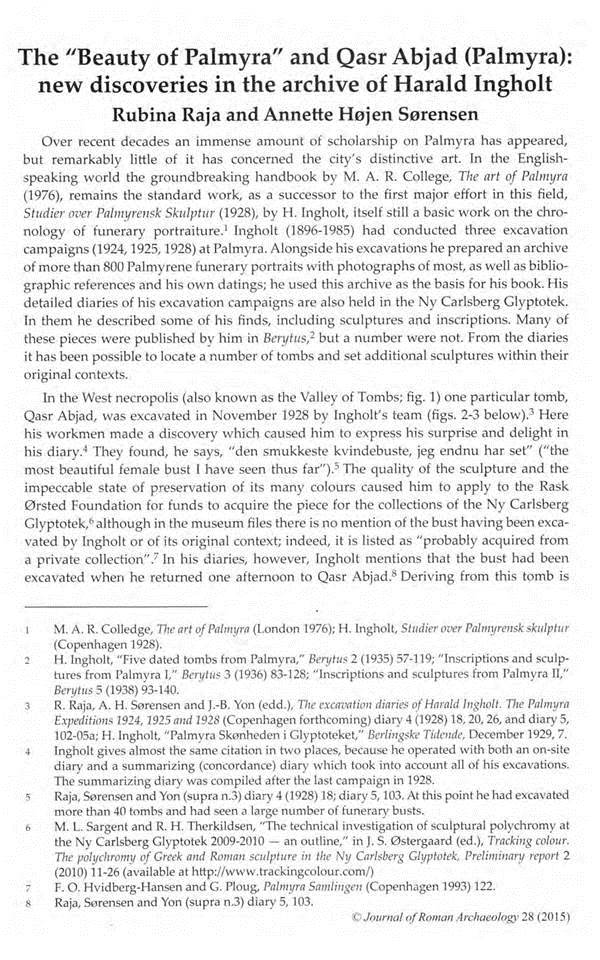The "Beauty of Palmyra" and Qasr Abjad (Palmyra): New discoveries in the archive of Harald Ingholt
New publication by Rubina Raja and Annette Højen Sørensen.

Over recent decades an immense amount of scholarship on Palmyra has appeared, but remarkably little of it has concerned the city’s distinctive art. In the English-speaking world the groundbreaking handbook by M. A. R. College,The art of Palmyra (1976), remains the standard work, as a successor to the first major effort in this field, Studier over Palmyrensk Skulptur (1928), by H. Ingholt, itself still a basic work on the chronology of funerary portraiture. Ingholt (1896–1985) had conducted three excavation campaigns (1924, 1925, 1928) at Palmyra. Alongside his excavations he prepared an archive of more than 800 Palmyrene funerary portraits with photographs of most, as well as bibliographic references and his own datings; he used this archive as the basis for his book. His detailed diaries of his excavation campaigns are also held in the Ny Carlsberg Glyptotek. In them he described some of his finds, including sculptures and inscriptions. Many of these pieces were published by him in Berytus, but a number were not. From the diaries it has been possible to locate a number of tombs and set additional sculptures within their original contexts.
The Palmyra Portrait Project’s work over the last four years has proven valuable in ways which were not forseeable und shows that basic research in the humanities may lead to groundbreaking discoveries.
Raja, R. & Sørensen, A.H. (2015). The "Beauty of Palmyra" and Qasr Abjad (Palmyra): New discoveries in the archive of Harald Ingholt. Journal of Roman Archaeology, 28, 439-450.
